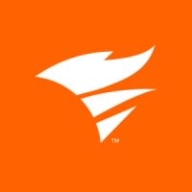

Find out in this report how the two Cloud Monitoring Software solutions compare in terms of features, pricing, service and support, easy of deployment, and ROI.
| Product | Market Share (%) |
|---|---|
| Sumo Logic Observability | 0.3% |
| SolarWinds Hybrid Cloud Observability | 0.4% |
| Other | 99.3% |


SolarWinds Hybrid Cloud Observability enhances IT operations with comprehensive visibility across hybrid environments for improved performance and uptime.
Providing a unified platform, SolarWinds Hybrid Cloud Observability allows IT teams to manage, monitor, and optimize both on-premises and cloud resources. It integrates seamlessly with existing tools, improving efficiency with robust data analytics and visualization. Its advanced features decrease time-to-resolution for system issues and help maintain system health.
What are the most important features of SolarWinds Hybrid Cloud Observability?SolarWinds Hybrid Cloud Observability is implemented across multiple industries like healthcare, finance, and manufacturing to ensure reliable performance and security of IT ecosystems. Its adaptability and comprehensive coverage make it a favored choice for enterprises managing both legacy and cloud-based infrastructures.
Sumo Logic Observability offers advanced monitoring solutions with features like integrated dashboards and querying capabilities, though presents a learning curve compared to alternatives. Designed for efficient log aggregation and analysis, it provides near-real-time updates facilitating improved incident resolution.
Sumo Logic Observability stands out with its ability to unify teams through a single platform, offering features that include customizable dashboards and valuable apps. It provides powerful log tracing and centralized management, designed for organizations focused on log aggregation, analysis, and expanding SIEM capabilities. While it has a steeper learning curve compared to some competitors, it excels in tailored integrations that enhance log searches. Users find themselves able to monitor, automate, and centralize log repositories for effective debugging. Despite its strengths, improvements in data enrichment and documentation organization are needed as current query functions can be slow, impacting efficiency. Users have also mentioned needing pre-built dashboards and better tab management for enhanced functionality. Cost management remains a notable consideration for users evaluating Sumo Logic Observability.
What features make Sumo Logic Observability effective?Sumo Logic Observability is implemented across industries predominantly for managing and analyzing extensive data sets, offering capabilities critical for SIEM activities and security examinations. By facilitating quick data visualization and transaction tracking, organizations in sectors such as finance, healthcare, and technology benefit from its robust framework to support infrastructure logging and large-scale data management, contributing to effective monitoring and system operations.
We monitor all Cloud Monitoring Software reviews to prevent fraudulent reviews and keep review quality high. We do not post reviews by company employees or direct competitors. We validate each review for authenticity via cross-reference with LinkedIn, and personal follow-up with the reviewer when necessary.